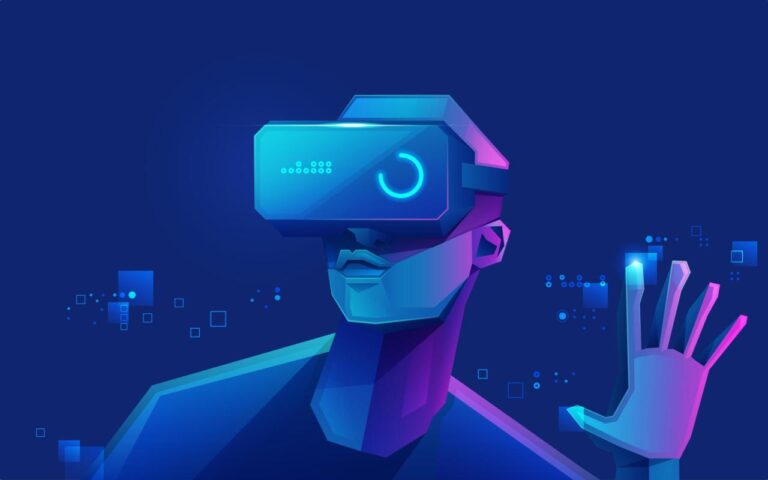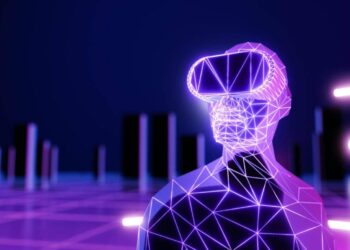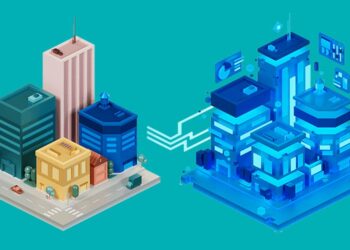Defining AR and VR
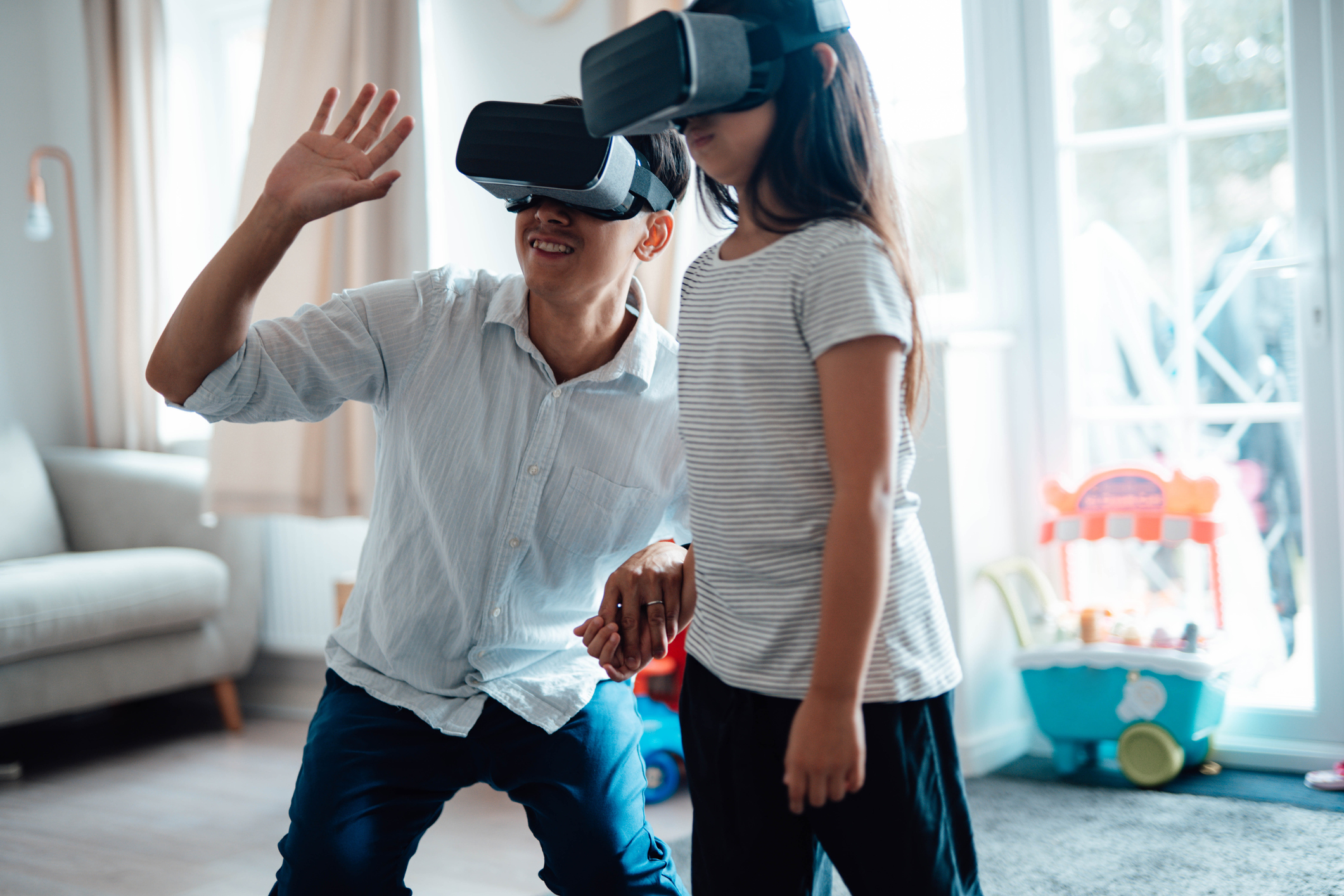
While often grouped together as “XR” (Extended Reality), AR and VR offer distinct but complementary experiences along a spectrum of immersion.
A. Virtual Reality (VR)
Virtual Reality creates a fully artificial, computer-generated environment that completely replaces the user’s view of the real world.
- Complete Immersion: Users wear a headset that blocks out physical surroundings, transporting them into a simulated digital space.
- Sensory Engagement: VR aims to engage multiple senses, primarily sight and sound, but increasingly touch (via haptic feedback).
- Presence: The ultimate goal of VR is to create a strong sense of “presence,” where the user feels truly “there” in the virtual environment.
- Applications: Gaming, immersive training simulations (e.g., flight simulators, surgical training), virtual tourism, and remote collaboration in shared digital spaces.
VR offers an escape into new realities, limited only by imagination and computational power.
B. Augmented Reality (AR)
Augmented Reality overlays digital information, images, and experiences onto the user’s view of the real world.
- Real-World View: The user’s primary view remains their physical surroundings.
- Digital Overlay: Virtual objects or information are superimposed onto this real-world view, enhancing it without replacing it.
- Interaction with Reality: AR allows users to interact with digital content in a spatially aware manner, blending it seamlessly with their physical environment.
- Applications: Navigation (directions superimposed on the road), remote assistance (experts drawing on a technician’s real-time view), interactive shopping, and educational overlays.
AR acts as a digital layer on top of our physical world, enriching our perception and interaction with it.
C. Mixed Reality (MR) and Extended Reality (XR)
Mixed Reality (MR) is a more advanced form of AR that allows digital and real-world objects to interact with each other in real-time, often using spatial mapping and tracking.
- Digital-Physical Interaction: A virtual ball can bounce off a real-world table, or a digital avatar can sit on a physical chair.
- Persistent Digital Objects: Digital objects can remain anchored in specific physical locations, visible across multiple sessions or users.
- Extended Reality (XR) is an umbrella term encompassing VR, AR, and MR, representing the entire spectrum of immersive technologies.
XR is the overarching trend, aiming for a future where digital content is seamlessly integrated into every aspect of our lived experience.
The Foundational Technologies Powering Immersive Worlds
The creation of compelling AR and VR experiences relies on a sophisticated interplay of cutting-edge hardware, software, and networking advancements.
A. Head-Mounted Displays (HMDs)
These are the primary devices for experiencing AR and VR.
- VR Headsets:
- Stand-alone (e.g., Meta Quest): All processing and graphics rendering are done on the device, offering freedom of movement.
- Tethered (e.g., Valve Index, PSVR2): Connect to a powerful PC or console for superior graphics and performance.
- Advancements: Focus on higher resolution displays (e.g., micro-OLED), wider fields of view (FOV), improved optics (e.g., pancake lenses for slimmer form factors), precise tracking (inside-out, eye-tracking), and enhanced comfort.
- AR Glasses/Headsets (e.g., Microsoft HoloLens, Magic Leap, Ray-Ban Meta Smart Glasses):
- Transparent Optics: Allow users to see the real world while digital content is projected onto their vision.
- Environmental Understanding: Crucial for spatial mapping, understanding surfaces, and anchoring digital objects in the real world.
- Challenges: Miniaturization, battery life, display brightness in varied lighting, and wide FOV are ongoing challenges for consumer-ready AR glasses.
B. Positional Tracking and Spatial Computing
To create a sense of presence and allow natural interaction, AR/VR systems need to accurately track the user’s position and orientation.
- Six Degrees of Freedom (6DoF): Allowing movement in all directions (forward/backward, up/down, left/right) and rotation along all axes (pitch, yaw, roll). This is key for immersive VR and realistic AR.
- Inside-Out Tracking: Cameras on the headset track the user’s movement relative to the environment (e.g., Meta Quest, Pico headsets), eliminating the need for external base stations.
- Outside-In Tracking: External sensors track the headset and controllers (e.g., original HTC Vive with Lighthouse base stations).
- Spatial Mapping: AR/MR devices actively scan and understand the geometry of the physical environment, creating a digital map where virtual objects can be placed and interact realistically. This is fundamental for MR experiences.
- Hand and Eye Tracking: Advanced systems track hand gestures and eye movements for more intuitive and natural user interfaces, enhancing realism and accessibility.
C. Graphics Processing Units (GPUs) and Rendering
Powerful GPUs are essential for generating and rendering complex 3D virtual environments and digital overlays in real-time.
- High Frame Rates: Maintaining high frame rates (e.g., 90-120 frames per second for VR) is crucial to prevent motion sickness and ensure a smooth experience.
- Realistic Graphics: Rendering detailed textures, lighting, shadows, and complex geometries for immersive visuals.
- Foveated Rendering: A technique that renders the area where the user is looking (fovea) at full resolution, while rendering peripheral vision at a lower resolution, saving computational power.
- Cloud Rendering: Offloading computationally intensive rendering to cloud servers and streaming the results to headsets, enabling richer graphics on less powerful local devices.
D. Audio Technology
Immersive audio is just as important as visuals for presence.
- Spatial Audio (3D Audio): Simulating sound coming from specific locations in the virtual environment, providing cues about object position and enhancing realism.
- Headphone Integration: High-quality headphones that are comfortable and provide good sound isolation or pass-through audio for AR.
- Microphones: For voice commands and communication within virtual spaces.
E. Haptic Feedback
Adding the sense of touch significantly enhances immersion.
- Haptic Controllers: Devices that provide vibrations or force feedback to simulate texture, impact, or resistance (e.g., Meta Quest controllers, Sense controllers for PSVR2).
- Haptic Suits/Gloves: Full-body or partial-body haptic devices that provide more granular tactile sensations, allowing users to “feel” digital objects and interactions (e.g., Teslasuit, HaptX Gloves).
AR/VR’s Transformative Impact Across Industries
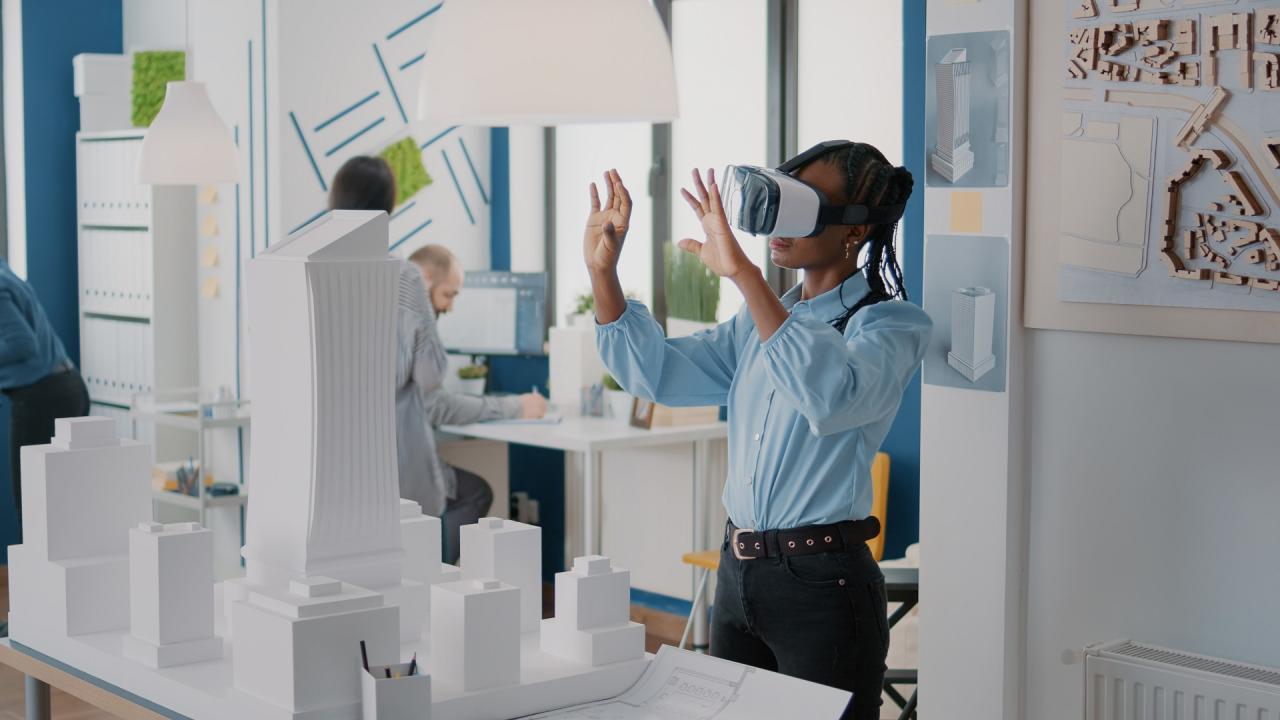
The widespread adoption of AR and VR is poised to revolutionize numerous sectors, creating unprecedented opportunities and efficiencies.
A. Gaming and Entertainment
This is the most obvious and arguably the most mature application for AR/VR.
- Deeply Immersive Gaming: Transporting players into fantastical worlds, providing unparalleled presence and engagement beyond traditional screen-based gaming.
- Virtual Concerts and Events: Attending live music performances, sports events, or festivals in virtual spaces, often with unique perspectives and interactive elements.
- Interactive Storytelling: Experience narratives in 360-degrees, making choices that affect the plot, creating a sense of being part of the story.
- Social VR: Connecting with friends and strangers in shared virtual environments, engaging in activities, games, and conversations as avatars (e.g., VRChat, Meta Horizon Worlds).
- AR Mobile Games: Overlaying game elements onto the real world (e.g., Pokémon Go), blending digital play with physical exploration.
B. Work and Collaboration
AR/VR is revolutionizing remote work and professional collaboration.
- Virtual Offices and Meeting Spaces: Conducting meetings in shared virtual environments where participants can interact with 3D models, whiteboards, and presentations, fostering a stronger sense of presence than video calls.
- Remote Assistance: AR glasses allow frontline workers (e.g., technicians, engineers) to receive real-time visual guidance from remote experts, reducing travel costs and improving troubleshooting efficiency.
- Design and Prototyping: Engineers and designers can visualize and manipulate 3D models of products in AR/VR before physical prototypes are built, accelerating the design cycle and identifying flaws early.
- Data Visualization: Immersive environments for analyzing complex datasets, allowing for spatial understanding and collaborative insights.
C. Training and Education
AR/VR offers unparalleled opportunities for experiential and hands-on learning.
- Immersive Simulations: Realistic training for high-stakes professions (e.g., pilots, surgeons, firefighters, military personnel) allows practice in safe, controlled virtual environments.
- Virtual Field Trips: Students can virtually explore historical sites, dissect a human body, or travel to distant planets, making learning more engaging and accessible.
- Skills Training: Learning complex manual tasks (e.g., equipment assembly, maintenance procedures) by overlaying step-by-step AR instructions onto physical objects.
- Language Learning: Immersive environments for practicing new languages with AI-powered conversational agents.
D. Healthcare
AR/VR is transforming patient care, medical training, and therapy.
- Surgical Planning and Training: Surgeons can practice complex procedures in VR, or use AR overlays during surgery for real-time patient data visualization.
- Pain Management and Therapy: VR can distract patients during painful procedures, help manage chronic pain, or treat phobias (e.g., exposure therapy for PTSD or anxiety).
- Rehabilitation: Gamified VR experiences can make physical therapy more engaging and effective for patients recovering from injuries or strokes.
- Medical Education: Immersive anatomical models and virtual patient scenarios for medical students.
- Remote Consultation: More engaging telehealth experiences with doctors virtually present in the patient’s environment (via AR).
E. Retail and E-commerce
AR/VR is redefining how consumers discover, try on, and purchase products.
- Virtual Try-On: AR apps allow customers to virtually try on clothes, glasses, or makeup using their smartphone camera, or even physically with smart mirrors.
- Home Decor Visualization: AR apps let customers place virtual furniture or appliances in their homes to see how they look before buying.
- Immersive Shopping: Virtual stores where customers can browse 3D products, interact with virtual sales assistants, and connect with other shoppers.
- Product Demos: AR can provide interactive 3D product demonstrations directly in the customer’s environment.
The Challenges and Obstacles for AR/VR
Despite the breathtaking potential, AR and VR face significant technical, ethical, and societal hurdles that must be overcome for widespread, mainstream adoption.
A. Hardware Limitations
Current AR/VR hardware still presents significant barriers.
- Cost: High-end VR headsets and enterprise AR glasses are often expensive, limiting consumer accessibility.
- Comfort and Ergonomics: Headsets can be bulky, heavy, and cause discomfort with prolonged use, leading to “VR fatigue.”
- Visual Fidelity: While improving, displays still have limitations in resolution, field of view, and the “screen door effect” (seeing individual pixels).
- Battery Life: Stand-alone headsets have limited battery life, requiring frequent recharging. AR glasses particularly struggle with this due to the need for continuous processing and display.
- Motion Sickness: Some users experience nausea or dizziness due to discrepancies between visual input and physical movement, although this is becoming less common with improved tracking and higher frame rates.
- Thermal Management: Powerful processors generate heat, requiring cooling solutions that add to bulk and weight.
B. Content Creation and Ecosystem Development
Building a rich ecosystem of compelling AR/VR content is a major challenge.
- High Development Costs: Creating high-fidelity 3D immersive content is time-consuming, expensive, and requires specialized skills.
- Lack of Killer Apps: While there are many interesting applications, a “killer app” that compels mass adoption (like the web browser for the internet or the smartphone app for mobile) is still emerging.
- Fragmented Ecosystem: Different hardware platforms and software development kits (SDKs) can lead to fragmented content libraries.
- Discovery and Distribution: Making it easy for users to find and access relevant AR/VR content.
C. User Experience (UX) and Accessibility
Making AR/VR intuitive and accessible for everyone remains a hurdle.
- Steep Learning Curve: New users often find VR/AR interfaces unfamiliar and difficult to navigate compared to traditional screens.
- Input Methods: While improving, current input methods (controllers, hand tracking) can still feel less natural than physical interaction.
- Onboarding: Streamlining the process of setting up devices, creating avatars, and entering virtual spaces.
- Digital Divide: Ensuring equitable access to AR/VR experiences, preventing a new form of technological inequality.
D. Privacy and Data Security
AR/VR systems collect highly sensitive data about users and their environments.
- Biometric Data: Eye tracking, facial expressions, body movements, and potentially even physiological responses can be collected.
- Spatial Mapping Data: AR devices map users’ physical environments, raising concerns about data about private spaces being collected and shared.
- Digital Footprint: Extensive data on user behavior, interactions, and preferences within immersive environments.
- Data Security: Protecting this vast amount of sensitive data from breaches, misuse, and unauthorized access.
- Identity and Anonymity: Managing digital identities in virtual worlds, balancing anonymity with accountability.
E. Ethical and Societal Implications
The immersive nature of AR/VR raises profound ethical questions.
- Digital Addiction: Concerns about excessive time spent in virtual worlds and its impact on mental health and real-world relationships.
- Misinformation and Deepfakes: The potential for highly realistic, immersive disinformation, making it harder to discern truth from fiction.
- Harassment and Safety in Virtual Spaces: Protecting users from harassment, bullying, and inappropriate content in shared virtual environments.
- Cognitive and Psychological Impact: Long-term effects of prolonged immersion on brain development, social skills, and perception of reality.
- Ownership of Digital Assets/Identity: Legal and ethical frameworks for ownership of NFTs, virtual land, and digital identities in the metaverse.
- Digital Equity and Access: Preventing a future where only certain segments of society can benefit from immersive technologies.
The Future of AR/VR
Despite these challenges, the trajectory for AR and VR is one of continuous advancement, deeper integration, and increasing ubiquity, moving towards a future where digital and physical realities seamlessly merge.
A. Pervasive AR Glasses
AR glasses are poised to become the next dominant computing interface, potentially replacing smartphones as our primary digital gateway.
- Sleeker Designs: Moving towards lightweight, fashionable glasses that are indistinguishable from regular eyewear.
- Seamless Integration: Providing contextual information, notifications, and interactive overlays directly in your field of view without needing to pull out a phone.
- Everyday Utility: Navigation, real-time language translation, remote assistance for everyday tasks, and subtle digital enhancements to reality.
- Spatial Computing: Our interaction with digital content will become spatial, blending intuitively with our physical environment.
B. Hyper-Realistic VR and The Metaverse
VR will continue to push the boundaries of immersion, becoming the portal to the full metaverse experience.
- Photorealistic Graphics: Advancements in rendering, AI, and cloud streaming will enable indistinguishable-from-reality visuals.
- Full-Body Tracking: More natural and immersive avatar representation through advanced tracking systems.
- Advanced Haptics: Full-body haptic suits and multi-sensory feedback (e.g., smell, temperature) for unprecedented immersion.
- Neurotech Integration: Brain-computer interfaces (BCIs) for direct neural control of virtual environments, offering unparalleled interaction.
C. AI-Powered Immersive Experiences
AI will be the intelligence behind the immersive worlds.
- Intelligent NPCs: More realistic and adaptive AI characters in games and simulations.
- Personalized Content: AI tailoring immersive experiences, content, and interactions based on user preferences and emotional states.
- AI for Content Creation: Accelerating the creation of 3D assets, environments, and even entire narrative experiences.
- Real-time Language Processing: Seamless voice interaction and real-time translation within virtual spaces.
D. Interoperability and the Open Metaverse Vision
The drive towards an interconnected, open metaverse will intensify.
- Universal Avatars: A single digital identity and avatar that can traverse different virtual worlds and platforms.
- NFTs as Digital Rights: True ownership and portability of digital assets (e.g., virtual clothes, land, items) across the metaverse.
- Decentralized Platforms: Blockchain and Web3 technologies will underpin the infrastructure, promoting user ownership and open standards.
- Standardization Bodies: Industry consortiums will work towards common protocols to prevent fragmentation.
E. Enterprise and Industrial Expansion
The value proposition of AR/VR in enterprise will drive significant adoption.
- Widespread Remote Assistance: AR glasses becoming standard tools for field service, maintenance, and training.
- Immersive Design and Engineering: VR/AR becoming indispensable tools in product development cycles across all industries.
- Healthcare Integration: More widespread use in surgical planning, patient therapy, and medical education.
- Data Visualization and Collaboration: Immersive analytics for complex business intelligence and collaborative decision-making.
Conclusion
AR/VR Immersive Worlds are not just a technological trend; they represent a fundamental paradigm shift that will redefine our relationship with information, entertainment, and each other. By seamlessly blending or fully immersing us in digital realities, these technologies promise unprecedented levels of engagement, learning, and connection. While significant hurdles remain—from perfecting hardware and populating vast digital spaces to navigating complex ethical dilemmas and ensuring equitable access—the relentless pace of innovation, fueled by convergence with AI, 5G, and blockchain, ensures their pervasive future. As we step into an era where digital content is no longer confined to flat screens but becomes an integral, interactive layer of our perceived reality, AR and VR will empower us to explore, create, and experience the world in ways previously unimaginable, truly ushering in a new era of human-computer interaction and a profoundly blended reality.

